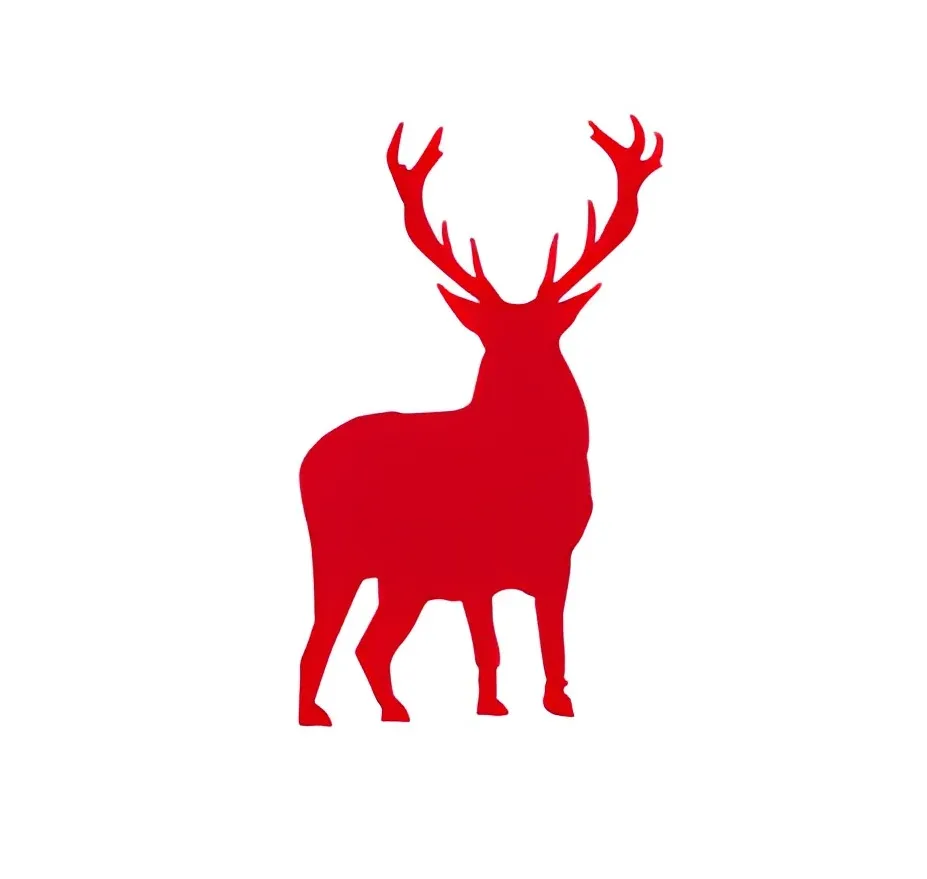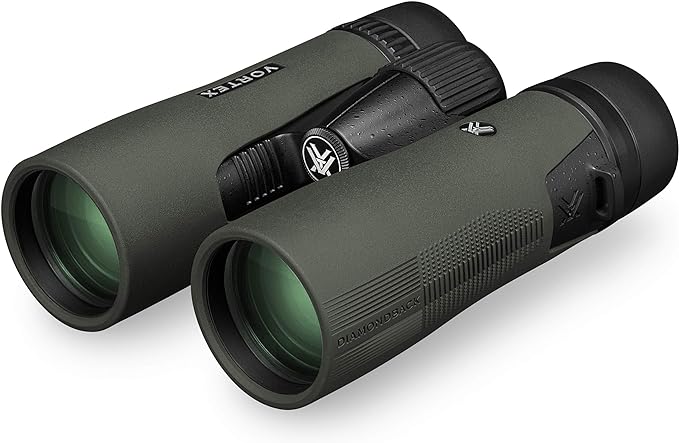For those who need to see objects in detail from a great distance, binoculars are an indispensable tool. Astronomers, hunters, birdwatchers, and military personnel all make use of them. Binoculars can be used for a variety of purposes because they come in a variety of sizes, shapes, and features. With binoculars, you can see wildlife or distant landscapes with great clarity and precision.
Additionally, using binoculars aids in reducing eye strain and makes it simpler to identify small objects at a distance. Anyone who wants to see the world around them more clearly and in greater detail, especially you, my outdoorsmen, will benefit greatly from using binoculars!
You can also check on How to Choose Binoculars for a more detailed account of how to buy one too which takes some time but worth the read.
Best Binoculars on A Budget:
Top Pick
*Best based on price, spec and build quality*
A Crash Course on Binoculars and the 10 Factors
1. Magnification
One of the most important considerations when selecting hunting binoculars is the magnification. The magnification tells you how much closer the target looks to you than it does to your naked eye. It is given as a number and the letter “x” combined. The target will appear three times closer to you at a magnification of three times than it would with your own eyes.
A better binocular is not necessarily one with a higher magnification. When the magnification is large, hunting binoculars become more sensitive to small movements. A good choice is an 8x magnification, but anything between 8x and 10x is good. The Nikon Laserforce Rangefinder Binocular offers a bright and clear red OLED display with 4-step intensity adjustment which is every hunter’s dream. It is highly recommended if you can afford one as this baby will be a great tool outdoors and for casual use too. The quality on this which matches its price will last for a lifetime if not two or three as they are built to last, these things.
Binocular Magnification Chart
| ACTIVITY | BEST MAGNIFICATION | RECOMMENDED CONFIGURATIONS |
|---|---|---|
| Hunting | 8x, 10x | 8×42, 10×42, 10×50, 12×50 |
| Bow Hunting | 6x, 7x, 8x | 7×28, 8×42 |
| Birdwatching | 7x, 8x, 10x | 8×32, 8×42, 10×42 |
| Elk Hunting | 8x, 10x, 12x | 8×42, 10×42, 12×50 |
| Stargazing | 10x, 12x, 20x, 25x | 10×50, 12×50, 20×60, 25×70 |
| Wildlife | 8x, 10x | 8×42, 10×42, 10×50 |
| Boating | 7x | 7×50 |
| Sporting Events | 6x, 7x, 8x, 10x | 7×28, 8×32, 8×42, 10×25 |
| Safari | 7x, 8x, 10x | 8×42, 10×50 |
| Whale Watching | 7x, 8x, 18x, 20x | 7×50, 8×32, 20×60 |
| Concerts | 3x, 4x, 8x | 4×20, 7×28, 10×25 |
2. Durability
Durability is another important aspect to consider when selecting binoculars. It will be used primarily outdoors in the open country, where it will be vulnerable to falls and the elements.
Binoculars should be well-constructed to withstand harsh conditions and the elements. Canon 10×42 L Image Stabilization is Canon’s first waterproof IS Binocular that will be heavy on your wallet as it is a top-of-the-range binocular but offers for great durability especially in the harsh outdoor conditions. If you’re on a budget, you can read How To Choose Binoculars For Your Needs and Budget for some advice.
3. Glass

When shopping for binoculars, you should also think about the quality of the glass and the lens. Binoculars are designed to provide clear, high-quality images of a target from a distance.
Glass and lens coatings of high quality are needed to achieve this. You should choose binoculars with HD extra-low dispersion (ED) glass of the highest quality for clear images.
4. Objective Lens

The amount of light captured by the binoculars is determined by the objective lens’s size. When shooting in low light, larger lenses are essential because they let in more light. However, binoculars with larger lenses are heavier.
The Vortex Optics Crossfire HD comes with a fully multi-coated lense which increases light transmission with multiple anti-reflective coatings on all air-to-glass surfaces. The roof prism design is also valued for greater durability and a more compact size.
If terms like objective lens seem to be confusing you or appears to be alien, then you should check on How to Choose the Right Binoculars which explores some terminologies which will be helpful to you.
5. Size

The binoculars’ size is also important. The binoculars’ weight is affected as a result. Binoculars with a moderate weight that allows you to move easily from one location to another while tracking your targets are ideal for outdoor activities like hunting or more sedentary activities like stargazing etc.
Compact binoculars are easier to carry but may sacrifice some image brightness, while full-sized binoculars offer better light-gathering ability but can be heavier as it all boils down to the size of the lenses.
The Nikon 8252 Aculon A211 is known to be a very light binocular which your hunting backpack will be able to accommodate while also offering a lighter travel.
6. Field of View

The area that you will be able to see with the binoculars at 1,000 yards is called the field of view. A smaller field of view allows you to get a better look, while a larger field of view makes it easier to search for an object without moving the binoculars.
For a better understanding, remember:
- Higher magnification often results in a narrower field of view. As you increase magnification, the binoculars “zoom in,” focusing on a smaller portion of the scene.
- Lower magnification generally leads to a wider field of view. This is why lower-powered binoculars are often preferred for activities where seeing a broad area is important.
In terms of field of view here are some usage examples:
- Bird Watching: Birdwatchers often prefer binoculars with a wide FOV, allowing them to easily follow birds in flight and observe activities over a larger area.
- Stargazing: Astronomers or stargazers may prioritize a narrower FOV for detailed observation of celestial objects, where pinpoint accuracy is essential.
- Sports and Events: A wide FOV is beneficial for capturing fast-paced action during sports events, hunting/tracking or concerts, which ensures that you don’t miss out on any action.
7. Eye Relief
The actual distance between where your eyes can see the field of view when looking through the binoculars and the surface of the eyepiece lens is known as eye relief. It is easier to use the binoculars for a longer period of time without getting tired of using them because the eye relief is longer.
If you are looking for a relatively cheaper binocular but with a good brand and overall, still pretty good then you can consider the Nikon Prostaff 3S 10×42 which is what I used to use when I first started.
8. Size of Exit Pupil

The size of the pupil is also important as the brightness is determined by it. The average human-adult pupil can dilate up to approximately 5-7mm in low-light conditions and binoculars with an exit pupil close to or larger than this size will deliver the best or most optimal brightness. Though you should note that during daytime use when pupils are smaller, the brightness difference between larger and smaller exit pupils may not be as noticeable.
A good choice is a 5mm exit pupil. The Adasion 12×42 HD Binoculars is a highly rated binocular which has a pretty large exit pupil, comes with a large eyepiece and makes full use of 12x magnification, delivering larger images and ensures clearer details.
9. Type of Focus
There are three types of focus: individual focus, center focus, and fixed focus.
Individual focus: each eyepiece is independently adjusted to achieve focus. Once they are set, individual focus binoculars are ideal for those who look at objects at varying distances. Once you’ve calibrated the focus for each eye, you don’t need to make constant adjustments when switching between near and distant objects.
Center focus: a wheel with a separate diopter adjustment is used with the center focus and is also the most common type of focus which is commonly used in general-purpose binoculars for activities like birdwatching, hiking, hunting and sporting events.
Fixed focus: unlike the other two, this focus here is permanently fixed and do not have a focusing wheel, allowing people to quickly and easily observe objects at various distances without the need for fine-tuning it.
10. Type of Prism
There are two kinds of prisms: roof and prisms from porro. At the optical axis of the eyepiece, the roof prism enables binoculars to be constructed in a more compact and lightweight manner.
Additionally, the objective lens is being designed in a straight line. From low to high magnifications, a bright and sharp field of view is made possible by the Porro prism.
Conclusion
Binoculars are a great tool to help you get a better view of the world around you. Whether you’re bird watching, stargazing, or just looking out into the distance, binoculars can give you an up-close and personal view of your surroundings.
With the right pair of binoculars, you can see details that would otherwise be impossible to observe with your naked eye. Binoculars offer a variety of features that make them an invaluable tool for anyone who enjoys the outdoors. These features range from powerful magnification to improved clarity and brightness.
You can also look at The Best Binocular Brands to feel the market out.
Some Really Useful Binocular Accessories to Consider:
| Celestron 93524 Roof and Porro Binocular Tripod Adapter |
| Vortex Optics Glasspak Binocular Harness |
| Vankey Smartphone Mount for Binocular |
| GOSKY Smartphone Adapter Mount for Binocular |

